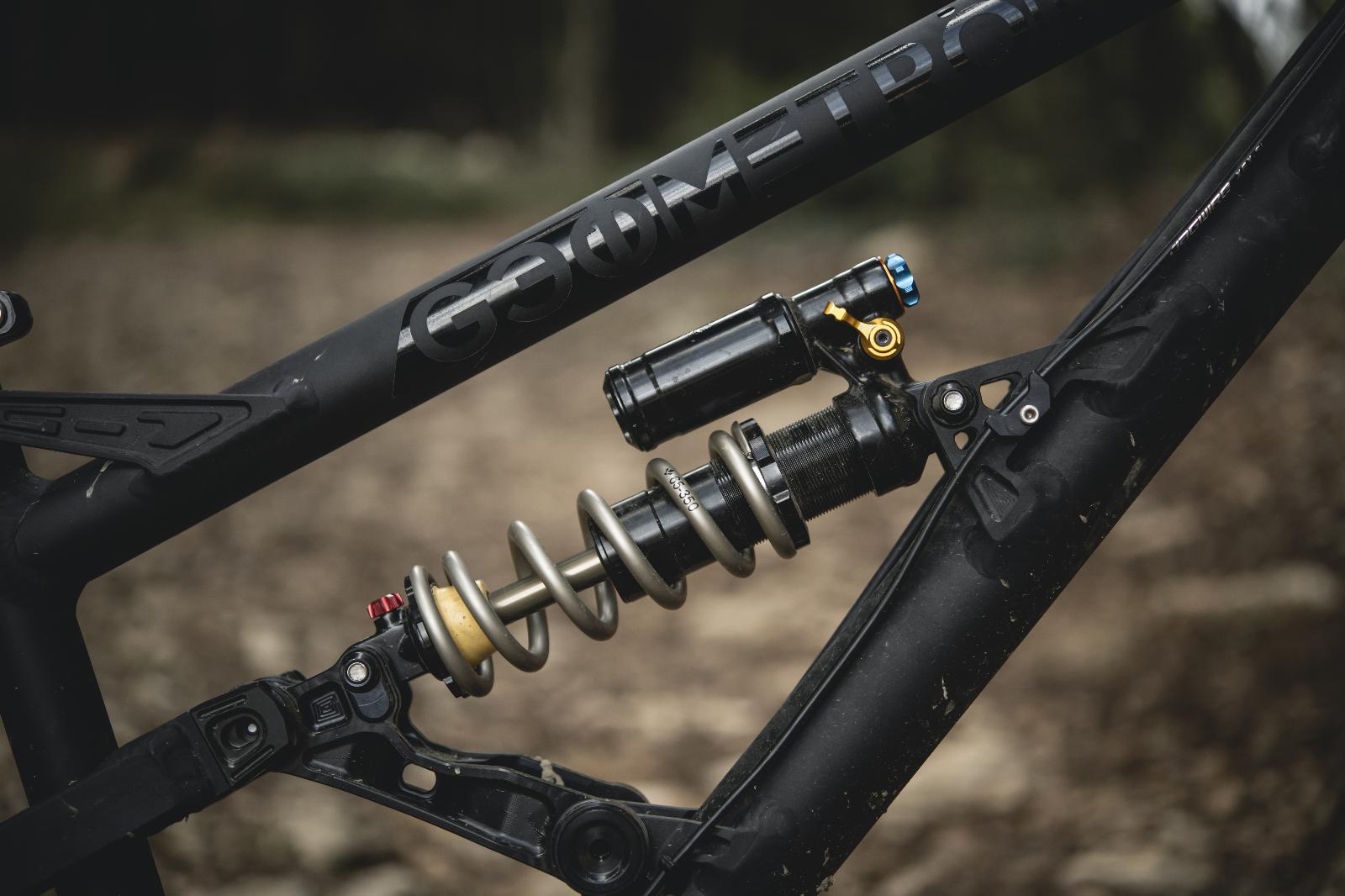Formula introduced the Mod shock based on their moto shocks but with the Selva fork’s CTS damper. We found out how that project came together.
Pete had a chat with Formula’s main man, Vittorio Platania, to find out the process they went through to arrive at the Mod coil shock.

What was the inspiration for developing the Mod shock?
Well, rear shocks are not new for us. We’ve been doing moto trials shocks for ten years now with our brand Tech Suspension. We wanted to do MTB shock that matched our Selva fork.
Since the feedback on Selva’s performance is very high, we wanted to have something that fits that, so the Mod was a very long process. The inspiration came from our motorcycle background.
If you look at companies involved with moto or car, most of the time, they build a lot of damping in their shocks. We didn’t want to have an over-damped shock since we believe that MTB is a different sport, and the damping needs to be, let’s say, more “free.” MTB is lighter and way more reactive than a motorcycle.
For this reason, we knew that the key to having a high level of performance was not just the damping but the amount of disposable oil. This is why we designed the Mod based on the High Flow concept. The first prototypes were too big, but we worked from there, we knew that we wanted the right amount of oil to work with. Of course, the CTS is a big part of the Mod. We wanted to have it also on our shock and not only on forks.
Once you’d decided to create a shock, what happens next?
First, we start the design. We talk a lot about features, sizes, weight, performance. Once we got a better idea, we start building the first prototype. Then we test the first prototype, and we fix everything we don’t like. The Mod went through 4 different prototyping stages.

How many people are involved in that process and what do they do?
For the first step, we do a lot of brainstorming. In this scenario, many people are involved, from the tech dept to marketing, PM, or commercial. Once we know what we want is the R&D time.
They do design, and they produce the first prototype. We have three engineers that worked on the Mod. After we have the first prototype, we do another brainstorming; everyone says what they like and what they don’t from their perspective. It can be literally everything, technical or aesthetic. We work like that for each stage of prototyping. Maybe it is not the fastest way to put a new product on the market but, at least, we know exactly what we want and what we’re doing.
Did you consider an air shock?
Of course, we’re working on it but we had the feeling that start with a coil shock was a better idea. The Mod is a very special coil shock, we believe that many riders are going to benefit from it. It behaves differently than a traditional coil shock.
We had no problem finding the perfect tuning with bikes, like mono pivot, that most people think are not suited for coil shocks. You have to try it, this is our strength; when people try our products, they understand why we do it that way.
Does it take long to get a working prototype in-hand?
It really depends on the brainstorming step. But once we know what we want, it takes around one month to have the first rideable prototype. The real testing is after that. The process of getting it right is way longer than building the first prototype.
How many prototypes did you make before settling on what would be the production model?
We did four different prototypes, they were completely different. With the last version, we made several little changes, around 15, but is not something you would notice from the outside. Then we put a lot of hours of riding and testing on it. At this point, we start our production model. This is very important, we do not design products based only on production costs.
If we know that something will take us to a better product, we try to pursue it, even if it is not the smartest thing to do, looking just at production. Then we can engineer the production differently, so we can produce without problems. It’s a long process, but we don’t want limitations in performances and creativity.

Beyond prototypes, what form did your testing take?
We do a lot of labour tests, especially long-term testing, and a lot of riding. We have different testers out there, and the product needs to be at least one year of heavy use on testers’ bikes. The Mod was on some bikes at EWS starting from the end of 2019.
How important are athletes to testing new product?
They’re very important, but they can’t be the only one to test. A pro rider can help you to better understand your product, for sure, but you need more than this. People are bombarded with marketing. They often forgot that pro riders have mechanics, several spare products, custom tuning for whatever they do, and other stuff like that.
Besides that, pro riders want to ride tunings that no one would like to ride. They’ve needs that an average rider does not have. For these reasons, you can not rely on pro riders only. With CTS we want to give all riders what pro riders have, custom tuning, but easy to do.
How does modern bike design affect the your design choices?
Of course, we need to design a shock that fits any bike out there. This is one reason why we chose the High Flow approach. In this way, we can fit the Mod pretty much everywhere. Checking the room is also very important. You have to be sure that your shock will fit in the vast majority of bikes out there. Of course, you’ll always miss something, especially with a coil shock with a piggyback.
Did you have a Eureka moment when you new you’d got it right?
We did it the first time we test it on the field. We were pretty confident about the High Flow idea and the large bladder, but the first time we experienced the plushness, the traction, we were like, “Yeah! We got it right!”. Then, when we changed the CTS for the first time, we were super happy. The feeling was not like just “turning a knob,” but it was like doing a different shim stack.

Where did the name come from?
Well, the best name for a product is the one that remains at every brainstorming process. Maybe the first time is not the coolest, but it’s always there, other names went away, but this one stayed longer. Usually, that means that it’s just the right name cause it covers all aspects of the products. If you ask me, Mod stay for: modern, modifiable, module, but, most essential for Mods. I’m a big fan of The Who and the movie Quadrophenia, so I thought it was a super cool name.
Favourite moments?
A lot of them. One that was very cool was Pete’s reaction coming down the bike at BCW after his first run. He was super happy; he loved the shock, which is exactly why we work hard on our products. We want to see people stoked after a good run down the hill.
Any disasters?
Well, the first prototypes have a lot of problems, most of the time. This is the reason why you do it, cause you have to fix mistakes. I remember we had some trouble with some O-rings and with the lock-out initially, but we have a great team of engineers and did a great job.
People to thank?
Well, pretty much everyone at Formula who was involved in this project. We’re like a family. In different ways, we’re all involved in a new product. So, I guess I would thank the entire team, they did a great job, all of them.




